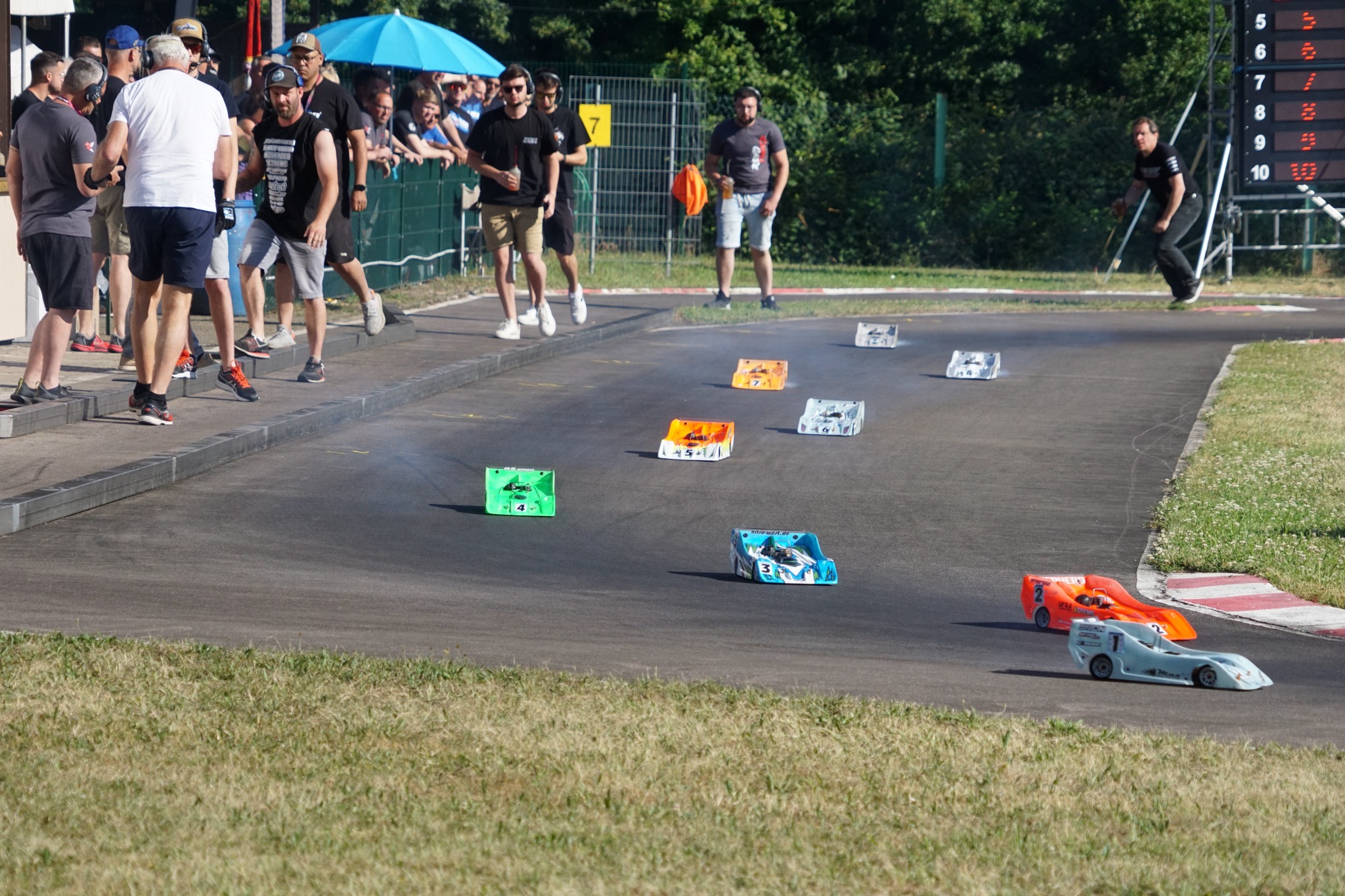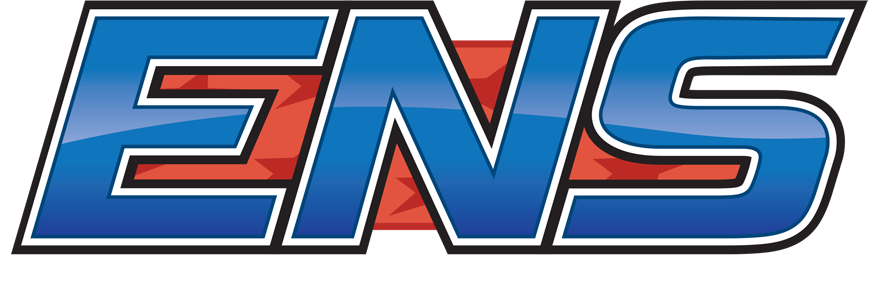
GENERAL INFO
The track is closed to all ENS drivers on the Monday, Tuesday and Wednesday preceding the event. Thursday is an optional free practice day (track time is controlled in groups), with the normal practice fee payable to the host club.
For drivers who live outside of Europe and have not attended an ENS event at the track before, you may also have the option to practice on Wednesday before the event (if the track can facilitate this). This ONLY applies to drivers who don’t live in Europe and haven’t been to the track before. It also does not apply if it is a “new” track to the ENS calendar – then practice is only possible on Thursday for everyone.
The official ENS event starts on Friday. Normally, Friday morning is Practice, with the last two Practice rounds used to determine seeding, counting best three consecutive laps. These seeding times will be used to set the heat order for qualification. Each heat group will consist of approximately equal number of cars, to avoid issues with marshalling. Friday afternoon is when the Qualification rounds start.
Saturday is the remaining Qualification rounds and lower finals. Sunday is the upper and main finals. Depending on entry numbers or weather, the schedule may be adjusted to give everyone maximum track time.
1:8 Masters Class
This class is for drivers who are aged 40 years or older, as of the last day of the current season.
1:8 Sport Class
This class is intended to be for hobby and club drivers. Professional drivers or those who have made an A-Final in the 1:8 Scale class at the ENS in the previous two seasons, or the Main Final at the EFRA 1:8 Track European Championship in the previous two seasons, cannot race in this class.
NOTE: You can only make your entry for ONE of the 1:8 scale racing classes per ENS event. So, if you sign up for the 1:8 Masters class, you can NOT sign up for the normal 1:8 scale class or the 1:8 Sport class, or in any other combination. This rule is existing to keep the track time between the 1:8 scale racers at the same level!
Qualification
Normally, four rounds of Qualification are run. ENS uses the points system to calculate overall qualifying positions. If two rounds are completed, the best one score counts. If three or four rounds are completed, the best two scores count. If five or six rounds are completed, the best three scores count. All Qualification runs are 4 minutes, using the ‘flying start’ system. There is 4 minutes warm before each heat.
Finals
Finals are run using the ‘ladder system’. The top ten qualifiers are directly entered into the A-Final. In the lower finals, normally 8 drivers will be set into each final. The top two finishing drivers in each final are bumping up and race in the next final too. This means there are normally 12 cars in the A-Finals and usually 10 cars in all lower finals (as long as the track and driver stand allows these numbers). The ENS Orga Team may have to change these numbers depending on the number of entries or weather conditions.
Normally, the A Finals are 45 minutes long for 1:10 and 1:8 classes, and 30 minutes for 1:8 Masters and 1:8 Sport classes. All other finals are 20 minutes. Depending on entry numbers or weather, the length of the finals may be adjusted.
In case of wet weather during the finals, all lower finals (up to and including B Finals) will continue as scheduled. When announced that it is wet conditions, any tyres (foam or rubber) may be used. Tyre additives, or any tyre with any type of additive on, may not be used. Situations for the A Finals will be announced before the start of each race.
Start Delays/Timeout
A 5-minute delay can be called only before the start of an A Final and only before the cars have been called to the pit lane at the end of the warm-up period. The delay must be called by the driver or their primary mechanic asking a race official. That driver will then start from position 13 on the starting grid. During the delay, the track remains open for warm up/practice. When the 5-minute delay expires, the race will start – there is not an additional warm up time after the delay. If weather conditions have significantly shortened the event, it may not be possible to call a delay. This will be announced by the Race Director.
TIRE RULES
All participants have to use the hand-out ENS tires. These are a fixed size and shore rating. Any modification or treatment is strictly prohibited. Any driver found using any type of tire treatment or additive will be disqualified from the entire ENS season. It is absolutely forbidden to use a shore meter or any other device to test or check the tire hardness in the controlled tire areas. This applies to both ‘new’ tires you take, and the tires that you put back into your bag. You may measure the tire diameter only.
When registering for an event, each participant should declare the number of tires they want to use for the event (Controlled Practice, Qualifying and Finals). These tires must be purchased in any event. Extra tires may be possible to purchase if stocks last. Only the number of tires declared at registration are guaranteed to be available.
The hand-out tires must be used for all rounds of Controlled Practice, Qualifying and Finals. The Free Practice rounds (on Thursday, Friday morning, or Saturday morning, if held) cannot use the hand-out tires, you must use your own tires.
At the start of each race, the driver (or mechanic) will go to the tire area. They may purchase a new set of tyres, or use any four tires they like from their personal tyre bag. After each race, the tires must be taken off the car in the controlled area, and put back into the personal tire bag. These tires may then be used again in subsequent rounds. Any tires not placed back into the tire bag and taken out of the pit lane or controlled area may not be used again at the race. No other tires can be brought into the pit lane or controlled area.
For A-Final practice sessions, drivers may only use the hand-out tires already in their bag, or purchase new tires. They may not use their own tires for this session.
After the last final, each driver may pick up his complete tire bag with all used tires in it.
Tire Specifications
For the 2025 season, all tires will be supplied by Matrix.
1:8 Scale, 1:8 Masters & 1:8 Sport
- Diameter: 69mm (front) / 76mm (rear)
- Shore: 32sh (front) / 35sh (rear)
1:10 Scale
- Diameter: 62mm (front) / 64mm (rear)
- Shore: 35sh (front) / 37sh (rear)
We have seen the use of small computer power supplies by many racers and this cannot be allowed. The insurance we carry for ENS states that the equipment we use must be CE certified. As these kinds of power supplies are not certified electric components we cannot allow them. The risk of using these devices is too big and we always have to be concerned about everybody’s safety.
TECHNICAL RULES
1:8 Scale & 1:8 Masters
- Width – 267mm maximum
- Height – 170mm maximum (or 180mm maximum including gurney wing), measured on 20mm blocks
- Weight – 2350g minimum, including personal transponder and empty fuel tank
- Fuel tank – 125ccm maximum, including fuel tube
- Body – All current LMP 1:8th scale bodyshells
- Carburetor – 9.0mm maximum intake diameter
- INS-box – regular INS box is mandatory at all times
- Exhaust – The inner diameter of the exhaust/stinger outlet must be no larger than 8.0mm
- Fuel – Only the “16EU” fuel is allowed to be used at the ENS
1:8 Sport
- All rules as 1:8 Scale class, but with only the following engine/pipe combos allowed:
| ENGINE | PIPE | MANIFOLD |
| OS MAX-R21 1B900 | Hipex 2069 Evo 3 | Hipex M321 |
| Sonic PS21S | Hipex 2069 Evo 3 | Hipex M321P |
- Only the original engines listed above may be used, without any modifications!
- Only the ‘older’ OS MAX-R21 engine (Part number 1B900) can be used – the new “Version 2” (Part number 1F400) version of this engine is not permitted for 2025.
- Only the 8.0mm Venturi for the Carburetor must be used, in the original size with no modifications.
1:10 Scale
- Width – 200mm maximum (without body)
- Height – 120mm maximum, measured on 10mm blocks
- Weight – 1650g minimum, including personal transponder and empty fuel tank
- Fuel tank – 75ccm maximum, including fuel tube
- Body – All regular 1:10th scale touring car bodyshells
- Body cutouts
- Rear of the body no higher than 50mm (measured on 10mm blocks)
- Cooling/refueling hole 60mm diameter maximum
- Front side window and rear window can be cut out
- Wing – 55mm maximum depth, no higher than the roof. Side dams 55x35mm maximum
- Engine – 2.11cc maximum / 3 ports
- Carburetor – 5.5mm maximum intake diameter
- INS-box – regular INS box is always mandatory
- Exhaust – The inner diameter of the exhaust/stinger outlet must be no larger than 5.2mm
- Fuel – Only the “16EU” fuel is allowed to be used at the ENS
BODYSHELL RULES
Minimum weight for the body is:
- 145 grams for all 1:8 Scale Classes (1:8 Scale, Masters and Sport)
- 90 grams for 1:10 Scale Class
The body must be ready to race, which means painted with gurney strip (1:8 Scale) or rear wing (1:10 Scale), stiffeners, stickers, and any other allowed parts. No extra weight may be added to the body to reach the minimum weight. ‘Extra weight’ means any part/glue that is only used to reach the minimum weight of the body and could be used to improve performance in any way. Glue or adhesives may be used only to strengthen or repair the body.
We will check bodyshells during Practice, and mark them ready for racing.
CHAMPIONSHIP
If points are tied at the end of the championship we use the following order to break the tie, only considering the counting rounds:
- Number of 1st place finishes
- Number of 2nd place finishes
- Number of 3rd place finishes
- Number of TQs
- Number of 4th place finishes
- Number of 5th place finishes
- Number of 6th place finishes
- And so on …
If you TQ a round and it ends up being a throw out round, your TQ point will still be added to your championship points total.
